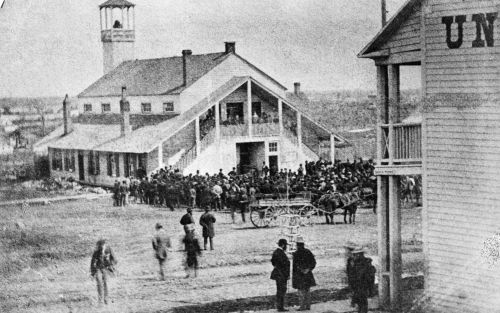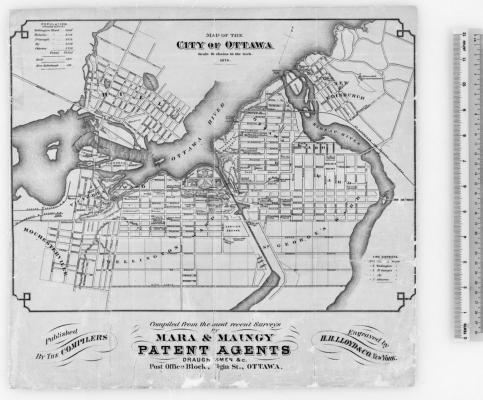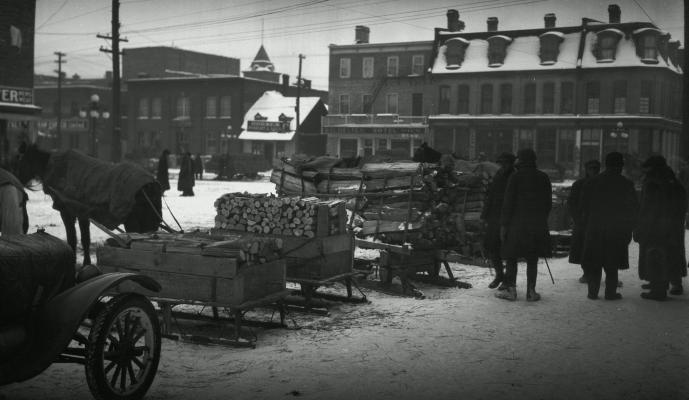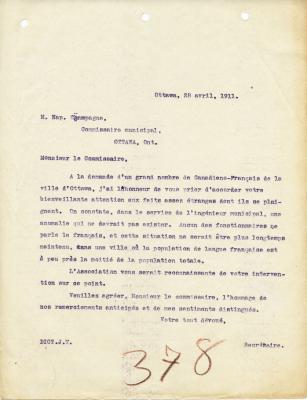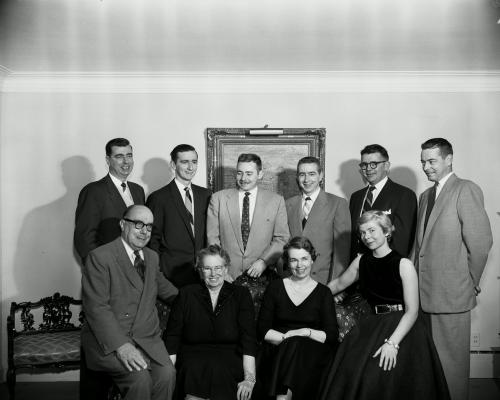In its early days, Bytown has no legal existence. The community is an integral part of the Township of Nepean, itself part of the Bathurst District, which is governed from Perth, located some 100 kilometres to the south. It is not until 1847 that Bytown is incorporated and grants itself a municipal government, along with laws and regulations.
Since Bytown has been left pretty much to its own devices for nearly 20 years, the first local elected representatives – merchants, forestry contractors, landowners and other speculators – have no difficulty in agreeing on the most pressing issues. A fundamental condition for smooth operations, and something that was sorely lacking in what was until then only a camp of disreputable loggers, becomes the new local government’s main priority: maintaining order. Two other concerns also take precedence: constructing streets, which are in poor condition, and ensuring water supplies, for both drinking and fighting fires.
But conflicts quickly emerge, reflecting Bytown’s ethnic and religious diversity. On the one side, Francophone Catholics and Irish Catholics come together to oppose Protestants on the other. The former unite under the banner of the Reformists (under the Liberal Party), more inclined to recognize the cultural identity of French Canadians. The latter rally to the Conservatives, who ardently defend the British Empire and its representatives. The two major political groups competing in Canada try, in Ottawa and elsewhere in the country, to take control of the fledgling town. They wage a merciless battle to form municipal government and defend their ideas.
Since each group occupies a distinct area, the electoral territorial division of the new municipality becomes an important issue. The Conservative government, which creates the Bytown Corporation in 1847, thus grants the “West” district in Upper Town powers that are almost equivalent to the combined influence of the other two districts, the “South” and the “North,” located in the predominantly Francophone Lowertown. The first district elects three representatives for some 234 owners, while the other two jointly elect four representatives for 645 owners.
In 1850, however, the Reformist government of the day must reincorporate Bytown after the 1847 incorporation law is rejected. A new electoral territorial division is put in place, granting Conservative Upper Town no more than two representatives, with Reformist Lowertown forming the majority. Since the representatives delegate one of their own to occupy the mayor’s seat, a Reformist is selected to fulfill this function.
Two new districts are added in 1855, when the City of Ottawa is created, to the benefit of the Francophone population. Representatives of the Victoria district, located in the LeBreton Flats sector, and St. George’s in Sandy Hill are also Reformists. Until 1889, they derail attempts by the Conservatives to subdivide the district of Wellington in response to the city’s growth west of the Rideau Canal, thereby preserving Lowertown’s influence on city affairs.
City Hall, demolished in 1874. First Ottawa City Hall, located on Elgin Street, which also serves as the West Ward Market Building [ca. 1840-1874].
Library and Archives Canada, Charles Berkeley Powell fonds [graphic material, textual record, object] (R11188-0-4-E), C-002185.
